Safety valve for the boiler: design structure, operating principle and installation rules
Self-installation of the boiler is considered a responsible event that requires maximum compliance with the rules and regulations of the connection. A safety group is necessarily involved in the piping of the water heater, which includes a safety valve for the boiler - a small but functionally important device.
In this article, we consider varieties of safety valves, its structural features. Indeed, in order to install the heater without errors, you should understand the device and the principle of operation of the valve.
We also give instructions for tying the boiler and tips for installing a safety valve, and give useful recommendations on choosing the right equipment.
The content of the article:
Types of safety valves
Safety valves are often confused with check valves, and sometimes they simply use the term “check valve” to refer to them. In fact, these are two completely different devices, although they have common features.
The non-return valve is responsible for ensuring the movement of the medium inside the pipeline in only one direction, while the purpose of the safety valve is to protect the pipe and the units connected to it from destruction caused by an increase in pressure in the network above the standard.
The replacement of concepts occurs, since the second important function of the fuse is to create a barrier that prevents the fluid from moving in the opposite direction.
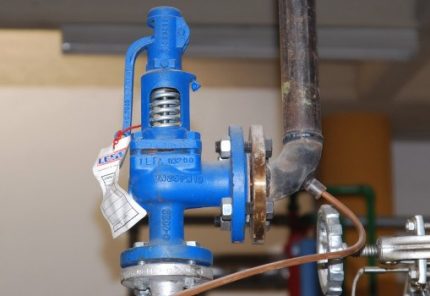
There are several types of locking mechanisms that protect complex technical devices from pressure surges. Among them are spring, magnetic-spring, lever, lever-cargo devices.
The choice of this or that type is explained by the purpose of the pipeline and the characteristics of the medium that moves through it: water, oil, hot steam, chemical aggressive solutions.
For the installation of an electric boiler, one type of valve is designed - spring. They may differ in appearance, but their internal content looks the same.
Design and principle of operation of the device
To begin with, we will analyze in detail the device and the principle of operation of the safety valve.
Safety valves
The safety valve, like other types of valves, has a simple design and is a combination of two spring mechanisms enclosed in a common metal case.
There is no fundamental difference between brass and steel products, but brass is slightly more expensive and, according to reviews, lasts longer. The springs inside the case are made of chrome steel.
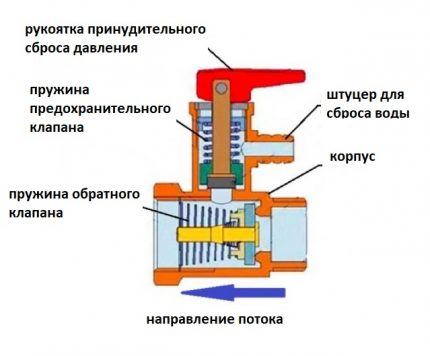
The principle of operation of the device
Both cylinders located perpendicularly have a similar design, but for different purposes. The part located along the water inside has a spring and a "plate" with an o-ring.
The spring holds the mechanism closed and prevents fluid from returning to the pipeline. The end parts of the cylinder are equipped with a male-female thread for inserting into the HVS system and connecting to the boiler fitting.
A more powerful spring is installed inside the second cylinder, which is in a neutral state even with a slight increase pressure indicator.
If in the line there is a sharp increase in pressure above normal, then the spring is activated and opens a hole for the discharge of fluid. The outer end of the cylinder is covered with a plug, screw or lever device.

The yellow marker in the figure outlines the area on which the marking is knocked out. It indicates the maximum pressure rating at which the valve is actuated. The pressure is indicated in MPa, but it can be easily converted to atmospheres: 0.7 MPa = 7 atm.
Also on the body is an arrow showing the direction in which water moves from the cold water system to the heating tank.
Although it is convenient to drain the water through the hole in the valve, experts recommend that manual control not be used too often.
Use the lever to force the valve to open as little as possible, and for prevention or repair drain the water it is possible in another way, for example, by unscrewing the water supply pipes.
Why is mounting a check valve insufficient?
A safety device is a component, therefore, you do not need to search in stores and select a spare part for installing a new water heater.But during transfer, the part may be lost.
Apparently, this is why some craftsmen installing a used boiler instead of a safety model cut a standard check valve, which is strictly prohibited by the instruction.

Anyone who starts to operate a boiler with incorrect piping risks not only equipment, but also people's lives. A balanced thermodynamic effect when heating water can get out of control, and then a conventional water heater turns into a real explosive device.
Pressure increased to 5-6 atmospheres, increases the temperature of the water inside the tank to a critical boiling point, and then even higher. A huge amount of steam builds up and an explosion occurs.
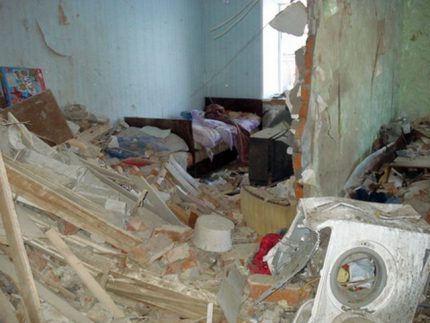
When using a standard safety valve for a domestic water heater, everything is different: when a critical pressure level is reached, the spring in the device compresses and releases some of the liquid out.
Due to this, the pressure inside the system is balanced and the equipment continues to heat in normal mode. For this reason, the installation of a fuse is mandatory and regulated by the installation requirements.
Thus, the safety device performs a number of functions important for the normal operation of the boiler.
Boiler manufacturers highly recommend professional installation of water heaters. If this is not possible, then all installation steps must occur strictly according to the instructions, in compliance with all standards and the mandatory installation of a safety module.
Valve Model Tips
As mentioned above, water heaters go on sale with a safety valve. In this regard, when buying a new model, especially a brand one, you do not need to worry about the selection of the part.
The need for a purchase arises in three cases:
- You got an already used boiler without strapping elements;
- the fuse was lost when moving;
- valve is broken or worn.
Knowing the model of the boiler, you can easily pick up a new element. In the instruction manual for the equipment, you can find the parameters of the limiting pressure - the same ones must be knocked out on the housing of the new part.
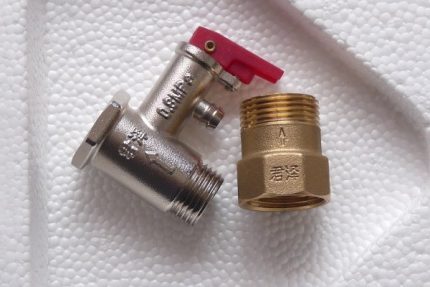
The diameter of the thread must match the dimensions of the mounting fitting and the HVS pipeline. In addition to the device itself, flax thread will be required on the pipe or rubber gasket if flexible eyeliner is used.
Sometimes between the boiler nozzle and the fuse a valve is installed to drain the water.This is a valid, permitted strapping scheme, but under one condition - the valve must be mounted on a horizontal outlet from the water supply line. There should be no shut-off devices between the safety valve and the water heater.
Assembly instructions for piping the boiler
Installing a safety relief valve is one of the steps in tying a boiler. The minimum set of parts for supplying the HVS line is polypropylene pipe and safety valve.
But we will consider another option, in which, in addition to the named elements, a tee, a drain tap and an American are involved. Also required PP fittings in order to shift the water supply lines to the wall.
A complex security node is not always used. Some installers believe that one safety valve is enough. This is the minimum version of the boiler strapping.
If tees or other adapters are not used, the fuse is fixed directly to the boiler nozzle. It can hide behind the case or drop 1-2 cm lower, which is more convenient for connection.
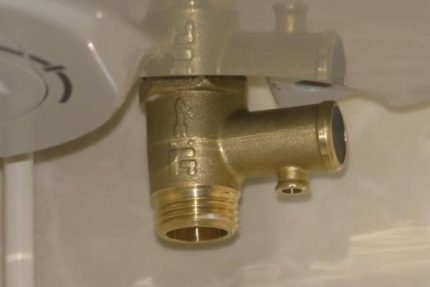
It remains to provide a drain for water through the hole in the fuse. To do this, use a flexible plastic tube of suitable diameter. It can be white, color or transparent.
One end of the tube is put on the mini-pipe of the valve, the other is taken out into the sewer tee or directly into the branch. Consider the possible installation options.
Prudent homeowners lower the drain pipe into a bucket or jar - this is wrong. If the container will save, then only from constant digging.
In an emergency, the volume of water transported through the tube increases, and the capacity may simply not be enough. The only right decision is to discharge the drain into the sewer pipe by inserting it into a tee or a separate entrance.
Professional Installation Recommendations
Even such a simple procedure as installing stop valves is based on certain rules. For example, room design often requires masking the piping and security group.
You can hide devices, but subject to three conditions:
- the length of the flexible inlet or pipe from the fuse to the tank should not exceed 2 m, otherwise excessive pressure will arise on the valve spring;
- ideal fuse installation - directly to the boiler fitting, and if it does not work, then installing a tee is still possible;
- A technical hatch should be equipped for servicing the fittings.
Many are worried when they see drops of water on the valve nozzle. This is a normal phenomenon that reports on the health of the device.
From time to time, small pressure surges occur in the line, which provoke a minimal discharge of liquid. You need to worry when the water either does not appear at all, or pours continuously.
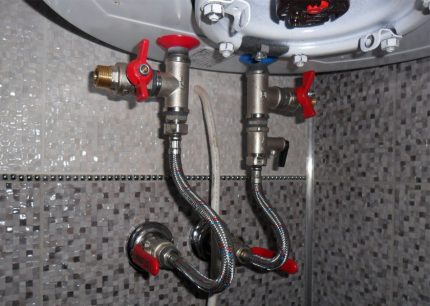
It should be remembered that the independent modernization of safety devices is strictly prohibited. If you need a valve of 0.8 MPa, then you need to purchase just such a new product, and not try to somehow remodel or adjust the device to 0.7 MPa.
If you have any doubts about the operation of the safety valve, you should dismantle it and check if the spring or seal is clogged. Having problems with the water heater itself and you don’t know what to do? We recommend that you familiarize yourself with the frequent boiler breakdowns and repairs. Not enough skills - invite a specialist from a service center.
Conclusions and useful video on the topic
To ensure that the installation process of shut-off and safety valves proceeds smoothly, without errors and misunderstandings, before installing the valve and other devices, familiarize yourself with the experience of experienced owners of boilers.
Once again about the design and principle of operation:
A few points to note:
Like any fittings for strapping, a safety valve is a necessary device for the proper operation of a water heater. It should not be confused with a check valve and should only be installed according to the instructions..
If you have difficulty choosing or installing, contact experienced specialists who will bring your boiler fully operational within half an hour.
Want to understand the purpose of the safety valve and the intricacies of its installation? Maybe you still have questions after reading our article? Feel free to ask our experts for advice in the comments section.
If you specialize in the installation of boilers, their maintenance and repair, and noticed an inaccuracy in our material or if you want to supplement what has been said with practical recommendations, please write your opinion under this article.

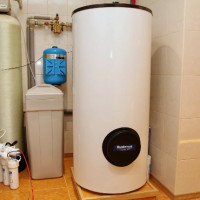 Indirect heating boiler: device, principle of operation and wiring diagrams
Indirect heating boiler: device, principle of operation and wiring diagrams 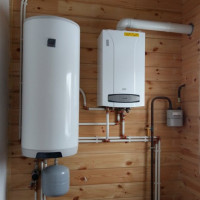 The layout of the binding of the indirect heating boiler + the rules for its installation and connection
The layout of the binding of the indirect heating boiler + the rules for its installation and connection 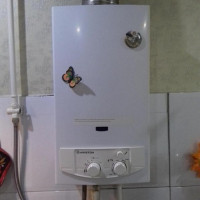 The principle of operation of a gas column: features of the device and operation of a gas water heater
The principle of operation of a gas column: features of the device and operation of a gas water heater 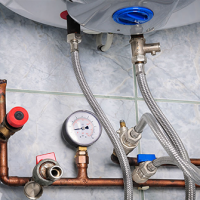 Schemes for connecting a water heater to a water supply system: how not to make mistakes when installing a boiler
Schemes for connecting a water heater to a water supply system: how not to make mistakes when installing a boiler 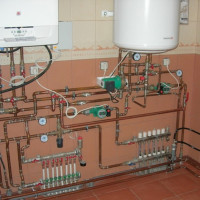 Connecting an electric boiler to a gas boiler: the best schemes and work procedures
Connecting an electric boiler to a gas boiler: the best schemes and work procedures 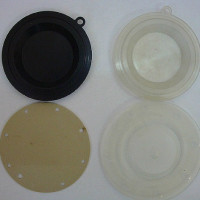 Membrane for a geyser: purpose, principle of operation + replacement instructions
Membrane for a geyser: purpose, principle of operation + replacement instructions  How much does it cost to connect gas to a private house: the price of organizing gas supply
How much does it cost to connect gas to a private house: the price of organizing gas supply  The best washing machines with dryer: model rating and customer tips
The best washing machines with dryer: model rating and customer tips  What is the color temperature of light and the nuances of choosing the temperature of the lamps to suit your needs
What is the color temperature of light and the nuances of choosing the temperature of the lamps to suit your needs  Replacement of a geyser in an apartment: replacement paperwork + basic norms and requirements
Replacement of a geyser in an apartment: replacement paperwork + basic norms and requirements
I recently installed a boiler in the house. Bought not very expensive. Installed, everything seemed to be normal. But he worked for me normally for about a week. Then he began to drip and right next to the valve. At first I just saw a drop, but then the unit began to flow. I immediately blocked everything, no longer used it and called the master. After inspection, it turned out that the safety valve was bad. If I did not pay attention to this, then there could be trouble. But the valve was replaced, now everything is fine.
Hello, Ivan! You did not specify whether you installed the boiler yourself or did you call the master from the gas service? Still, this should be done by professionals!
And also you did not write where the valve flowed from: from under the thread or from the valve itself? Perhaps they just packed the thread poorly? You understand that it is profitable for the master whom you called to take money for an additional type of work, and not just strengthen the thread sealant.
And under what circumstances can such critical pressure build up in a boiler that it can explode? Is this some kind of critical malfunction or does it happen periodically, does the safety valve just turn on in time and the pressure is released?
Hello. An explosion can occur if certain boiler devices fail, if it is improperly installed and operated.
For example, the temperature sensor has broken down, the boiler continues to warm water for a critical temperature, turning it into steam and gaining pressure above normal. In this case, it will help if the pipes from the boiler come in a metal-plastic version, since they simply vomit on the fittings at high pressure (most likely), and also if an additional safety thermocouple is installed, as on modern, expensive models of water heaters.
In the event of a breakdown of the protective devices - the gearbox or the safety valve, as well as the failure of the check valve (bare ten), with a sharp increase in pressure in the system.
If the part does not work, disconnecting the heater when a sufficient temperature is set.
Hello! Is this an option to install a safety valve? Piping in the apartment - safety valve - ball valve - flexible wiring 50 cm long - water heater.
Hello. The safety valve installation rules are as follows:
1. The device is always mounted on a cold water pipe.
2. It should be between the shutoff valves and the inlet to the water heater, while no other devices can be installed in the gap between them.
3. The maximum distance from the boiler inlet to the valve is 1.80 m-2.20 m.
Hello! Such a question: water flows from the valve tube (does not drip, but pours). Replacing the valve helps for a couple of months, then again the water flows (I changed the valve three times in a year).The pressure in the system is 0.5 MPa. I bought the valve at 0.6 MPa, because the tank is designed for such pressure. What should I do? Is it possible to set the valve at 0.7 MPa and will this solve the problem?
The native valve with a boiler lasted much longer, and those that are sold in stores quickly fail. I think the whole thing is in the spring - it ceases to hold over time. Or, as an option, can a little twist the sleeve that compresses the spring, and the valve at least starts to drip (which will be the norm)?
Hello! My scheme for supplying cold water in the bathroom: a reducer-tee, then from a tee a flexible hose to a boiler and a corrugation (1.5 m) - then after the corrugation, a shock absorber, then a toilet, a shower faucet, a washing machine are connected through the tees. After the flexible hose, a mandatory safety valve is installed on the boiler, which is factory set to 3 and 6 atm, respectively.
Flexible hose noticeably twitches when draining from the toilet or opening and closing the lever mixer, when the washer is working. I suppose that in these cases, the pressure in the pipeline drops first, and then returns to the original one.
Question: Is it possible to install an additional non-return valve between the tee and the flexible hose of the boiler in order to prevent pressure surges in this hose? Thank you in advance for your response.
I bought a water heater in the month of July 2019, OTGON 100 liters, a safety valve 7-MPa was included. Everything was fine, water from the safety valve was dripping through the tube.
Six months passed, and water poured in a stream in a stream. Bought a new one, exactly the same, the water also runs. I bought it again on the 8.5-MPa, set it up, but the water stopped flowing through the pipe altogether. The water heater heats and shuts off the water.
Tell me how to be? Just describe everything in order and sensibly.